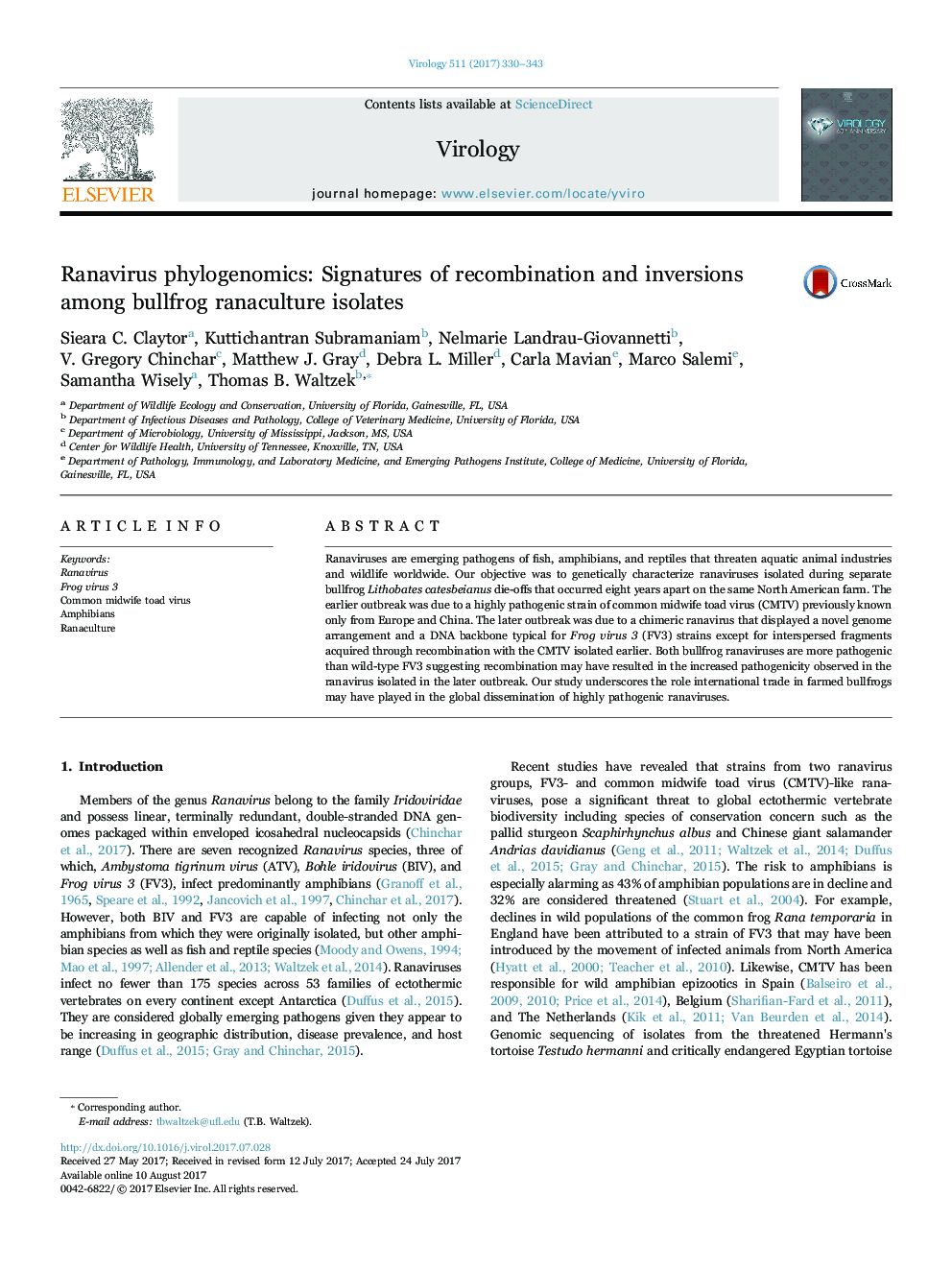| کد مقاله | کد نشریه | سال انتشار | مقاله انگلیسی | نسخه تمام متن |
|---|---|---|---|---|
| 5674882 | 1594206 | 2017 | 14 صفحه PDF | دانلود رایگان |

- First genomic sequence confirmation of a common midwife toad virus (CMTV)-like ranavirus in North America.
- First confirmation of recombination between CMTV- and Frog virus 3 (FV3)-like ranaviruses.
- Characterization of four orthologous US-22 gene clusters in CMTV- and FV3-like ranaviruses suggests these genes may play an important role in the pathogenesis & host range evolution of these emerging pathogens.
- The American bullfrog may have played an important role in the global dissemination of virulent ranaviruses given they are: 1) globally cultivated under intensive conditions, 2) susceptible to multiple ranaviruses (i.e., CMTV- and FV3-like ranaviruses) and thus may serve as mixing vessels for the evolution of pathogenic chimeric ranaviruses (i.e., FV3 x CMTV recombinants), and 3) regularly traded internationally.
Ranaviruses are emerging pathogens of fish, amphibians, and reptiles that threaten aquatic animal industries and wildlife worldwide. Our objective was to genetically characterize ranaviruses isolated during separate bullfrog Lithobates catesbeianus die-offs that occurred eight years apart on the same North American farm. The earlier outbreak was due to a highly pathogenic strain of common midwife toad virus (CMTV) previously known only from Europe and China. The later outbreak was due to a chimeric ranavirus that displayed a novel genome arrangement and a DNA backbone typical for Frog virus 3 (FV3) strains except for interspersed fragments acquired through recombination with the CMTV isolated earlier. Both bullfrog ranaviruses are more pathogenic than wild-type FV3 suggesting recombination may have resulted in the increased pathogenicity observed in the ranavirus isolated in the later outbreak. Our study underscores the role international trade in farmed bullfrogs may have played in the global dissemination of highly pathogenic ranaviruses.
Journal: Virology - Volume 511, November 2017, Pages 330-343